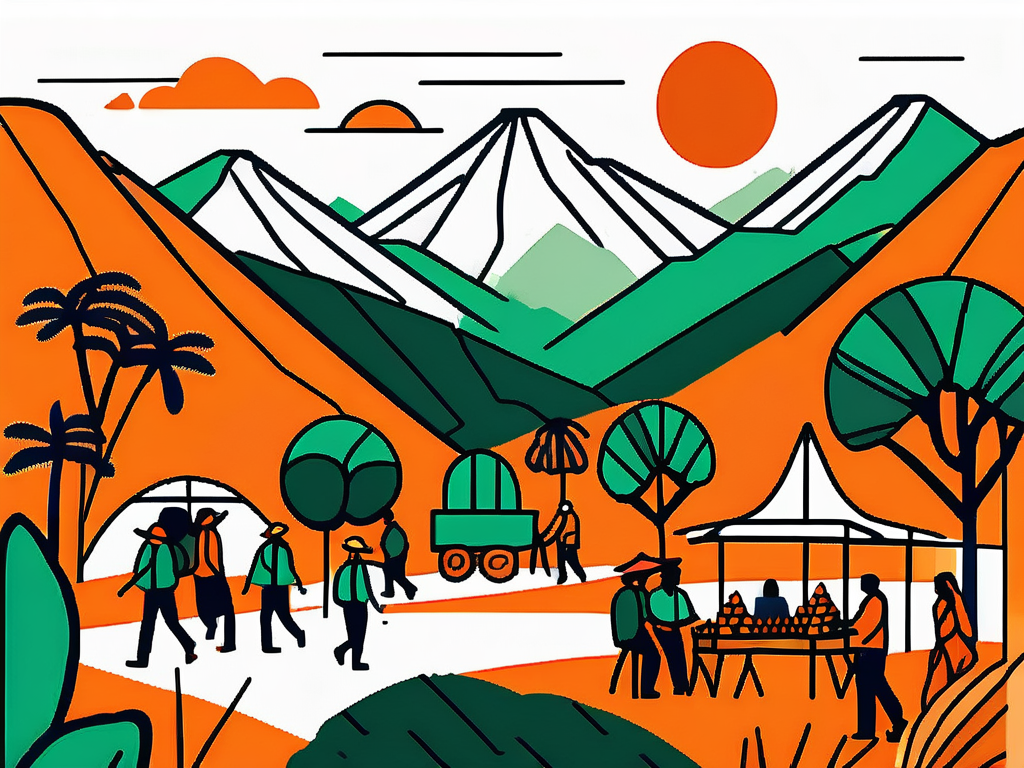Moving to South America is an exciting adventure filled with cultural exploration, economic opportunities, and new experiences. Understanding the nuances of the continent, preparing adequately, and embracing the local lifestyle can pave the way for a successful transition. This article serves as a guide to help you navigate the complexities of moving to South America.
Understanding South America: An Overview
South America is a vast continent with diverse landscapes, cultures, and histories. From the snow-capped Andes Mountains to the Amazon Rainforest, each region showcases its unique characteristics and traditions. The continent comprises twelve countries, each with its own government, customs, and languages.
One of the key aspects of South America is its remarkable cultural diversity. The indigenous populations, European influences, and African heritage contribute to a rich tapestry of traditions, festivals, music, and art. It’s crucial for newcomers to appreciate this diversity as it significantly shapes daily life in South American countries.
The Cultural Diversity of South America
As a melting pot of cultures, South America celebrates a range of ethnic backgrounds. Countries like Brazil, Argentina, and Peru offer a mix of indigenous people, descendants of European immigrants, and Afro-Latin communities, each contributing to the national identity. Traditional music, such as samba in Brazil and tango in Argentina, highlights this cultural fusion.
Understanding local customs, rituals, and etiquette is essential for building lasting relationships with locals and expats alike. Participating in local festivals not only creates memorable experiences but also fosters appreciation for the regional heritage. For instance, the vibrant Carnival in Rio de Janeiro attracts millions of visitors each year, showcasing elaborate parades, samba schools, and an infectious spirit of celebration that embodies the essence of Brazilian culture. Similarly, the Inti Raymi festival in Cusco, Peru, honors the Inca sun god and offers a glimpse into the rich history and traditions of the Andean people.
The Economic Landscape of South America
The economic landscape of South America varies significantly across countries. While some nations like Brazil and Argentina have large, diversified economies, others may rely heavily on agriculture or extractive industries. Major industries include mining, agriculture, tourism, and increasingly, technology.
As a prospective mover, researching the economic conditions of your intended destination is vital. Consider factors such as job availability, average salaries, and the overall cost of living to ensure you make an informed decision. Understanding these economic dynamics will help you identify potential opportunities and challenges when relocating. Additionally, the rise of startups and tech hubs in cities like Santiago, Chile, and Medellín, Colombia, is transforming the economic landscape, attracting young professionals and entrepreneurs eager to tap into the region’s growing innovation ecosystem. This shift not only enhances job prospects but also contributes to a dynamic and evolving cultural scene, making these cities increasingly appealing to a global audience.
Preparing for the Move: Practical Tips
Preparation is key to a successful move. Before packing your belongings and saying goodbye to friends, there are several practical steps you should take to ensure a smooth transition to South America.
Visa and Legal Requirements
Visa regulations vary across South American countries. Before moving, it’s essential to determine the type of visa you will need based on your circumstances—whether for work, study, or permanent residency. Some countries have straightforward processes, while others may require more documentation and time. It’s advisable to consult the consulate of your destination country for specific requirements and regulations.
Additionally, familiarizing yourself with local laws and customs can help avoid legal complications once you arrive. Knowledge of your rights and responsibilities as an expat will empower you to navigate your new environment confidently. Understanding the nuances of local bureaucracy can also save you time and frustration; for instance, knowing how to register with local authorities or obtain necessary permits can streamline your settling-in process.
Health and Safety Considerations
Health and safety are paramount when moving to a different country. Research the healthcare system in your chosen country; some nations have robust public healthcare, while others may rely more on private care. Ensure you have adequate health insurance that covers your needs while living abroad.
Also, be mindful of safety concerns. While many areas in South America are safe for expatriates, it is advisable to stay informed about the local situation and follow common-sense practices, such as avoiding isolated areas after dark. Joining local expat groups or forums can provide valuable insights into safe neighborhoods, emergency contacts, and tips for navigating daily life. Additionally, consider getting vaccinations that may be required or recommended for your destination, as health risks can vary significantly from one region to another.
Living in South America: What to Expect
Adjusting to life in South America may come with its own set of challenges and rewards. It’s crucial to understand what daily life looks like in your new country so that you can adapt more smoothly.
Cost of Living Across Different Countries
The cost of living varies significantly among South American countries and even within regions of the same country. For instance, living in Buenos Aires may be more expensive than living in a smaller city like Mendoza. Consider this when budgeting for housing, food, transportation, and entertainment.
While some aspects like groceries and public transport can be affordable, others, such as rent in major cities, might be steep. Creating a detailed budget before your move will help you manage your finances effectively.
Language and Communication Challenges
Spanish is the predominant language in most South American countries, with Portuguese being the primary language in Brazil. While many locals may speak English, especially in tourist areas, learning the local language can significantly enhance your experience.
Consider taking language classes or using language learning apps to build your proficiency. Not only will this help you communicate more effectively, but it also demonstrates respect for local culture, facilitating your integration into the community.
Working in South America: Opportunities and Challenges
Many people move to South America for work, drawn by unique job opportunities and the chance to experience a different lifestyle. Understanding the job market is essential for those seeking employment in the region.
Job Market and Employment Opportunities
The job market in South America can vary greatly depending on the country and industry. Sectors like tourism, education (especially teaching English), and IT are popular among expats. Networking and leveraging online job platforms can significantly improve your chances of finding suitable positions.
Keep in mind that competition can be tough, especially in economically challenged regions. Having a strong CV and building connections can help you stand out.
Understanding Work Culture and Etiquette
Work culture in South America may differ from what you are accustomed to. Relationships and face-to-face interactions are highly valued, and there is often a more relaxed approach to timekeeping and deadlines compared to corporate cultures in North America or Europe.
Understanding these cultural differences and being adaptable will not only help you at work but also in building professional relationships and integrating into the local workforce.
The Expat Community in South America
Joining the expat community can provide crucial support and guidance as you navigate your new life in South America. Expats often share resources, experiences, and friendships, making the transition easier.

Building a Social Network
Establishing a social network can help reduce feelings of isolation and make your new environment feel more like home. Consider joining expat groups on social media platforms or attending local meetups to meet like-minded individuals.
Participating in various social activities, whether through sporting clubs, cooking classes, or cultural events, can also provide opportunities to build friendships and connections.
Support and Resources for Expats
Many resources are available for expats in South America, including online forums, community websites, and local organizations that can provide advice on everything from housing to legal issues. Engaging with these resources can help you feel more informed and supported during your transition.
In conclusion, moving to South America is a journey filled with opportunities for personal and professional growth. By understanding the cultural and economic landscape, preparing adequately, and actively engaging with the expat community, you can ensure a fulfilling experience in your new home.
















